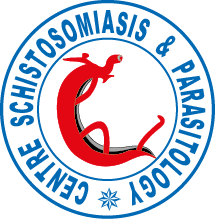Hybridisation between the digeneans Schistosoma haematobium and S. mattheei : viability of hybrids and their development in sheep
Abstract
The F1 and F2 hybrids of Schistosoma haematobium male × S. mattheei female were studied with regard to infectivity to intermediate and definitive hosts, isoenzymes (phosphoglucomutase) of individual male worms, randomly amplified polymorphic DNAs of individual adult worms and scanning electron micrographs of the tubercles of male worms. The infection rate of the F1 hybrid miracidia in Bulinus globosus (41.7%) was greater than that achieved in B. wrighti (16.3%); the infection rate of the F2 in B. wrighti was 15.4%. In the definitive hosts: in sheep only male F1 hybrids (i.e. no females and no F2 worms)were recovered; but in hamsters both paired F1 worms and unpaired F1 males were recovered, as were one pair of worms and unpaired males of the F2 generation. The S. mattheei and S. haematobium male worms showed very distinctive PGM patterns, and the F1 hybrids showed additive patterns and a polymorphism with two distinct types of band patterns which are the result of polymorphism in the S. haematobium. The RAPD profiles of the F1 hybrids were also composite of the two parental species. Scanning electron micrographs of the tubercles of male S. haematobium showed them to be heavily spined, whereas those of S. mattheei males were devoid of spines. The F1 hybrids did show variation ranging from non-spined, some with partial spination, to those with heavily spined tubercles. Male worms of the F2 generation possessed tubercles either with or without spines. The potential significance of hybridisation in areas of sympatry between S. haematobium and S. mattheei is discussed
